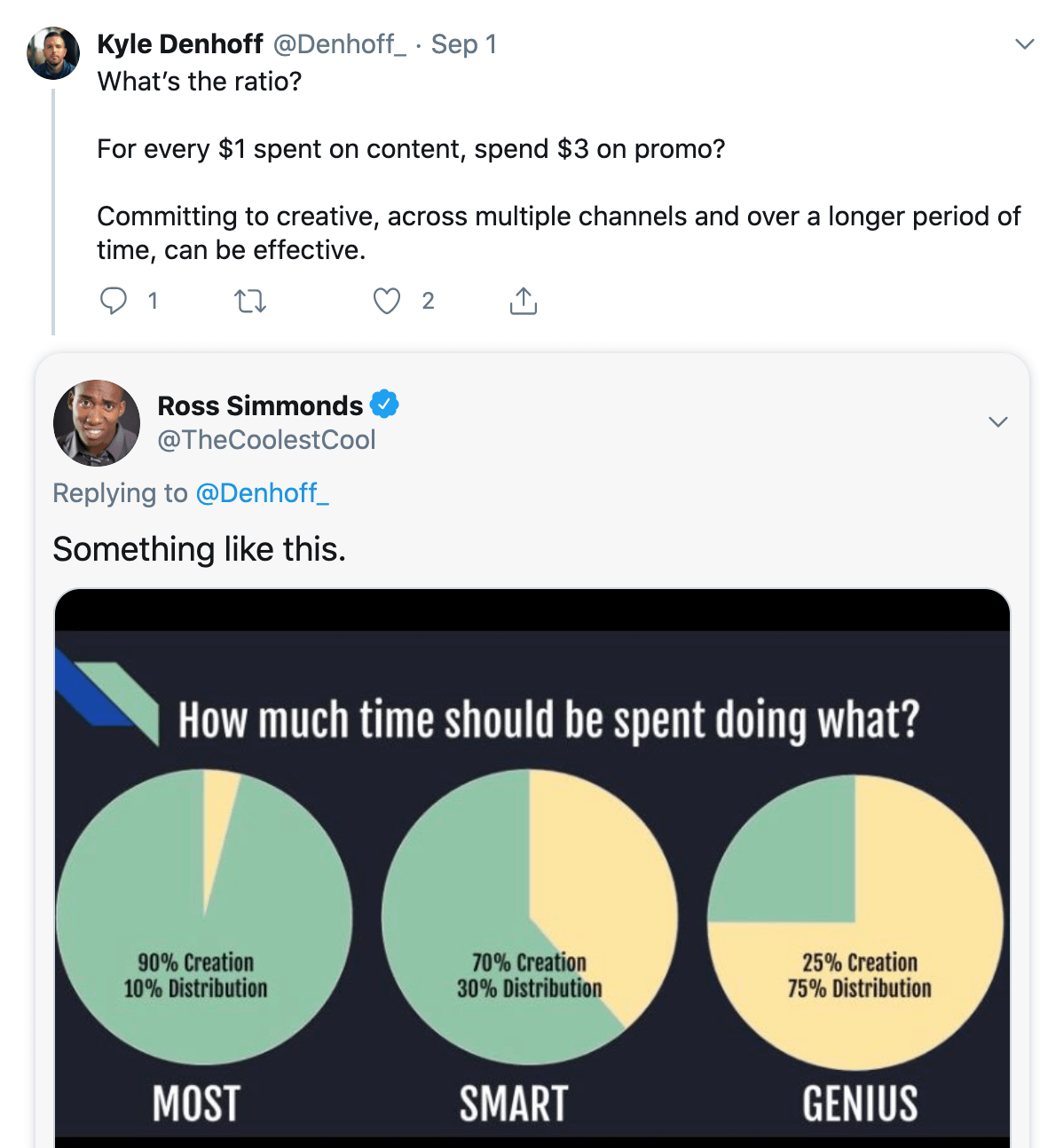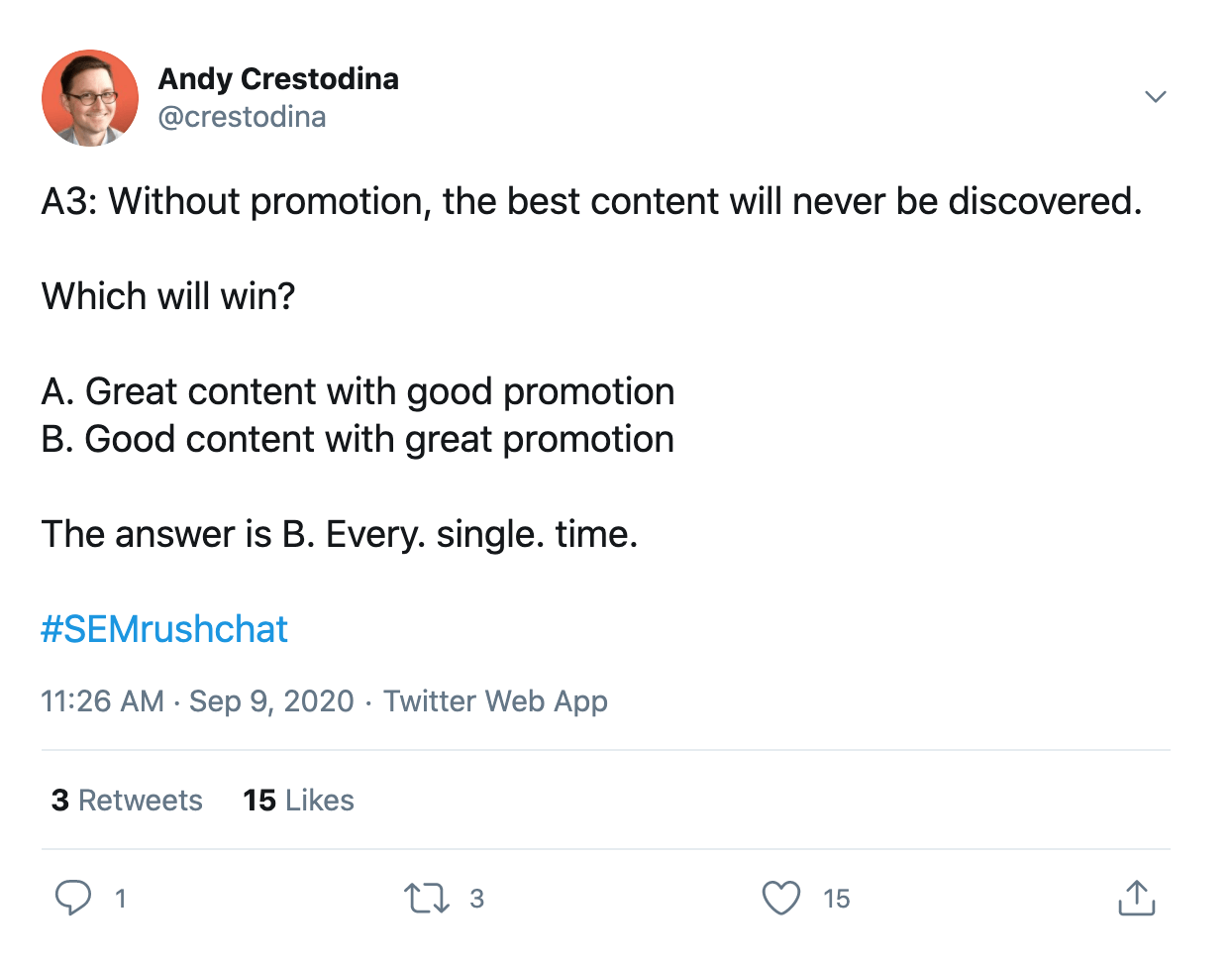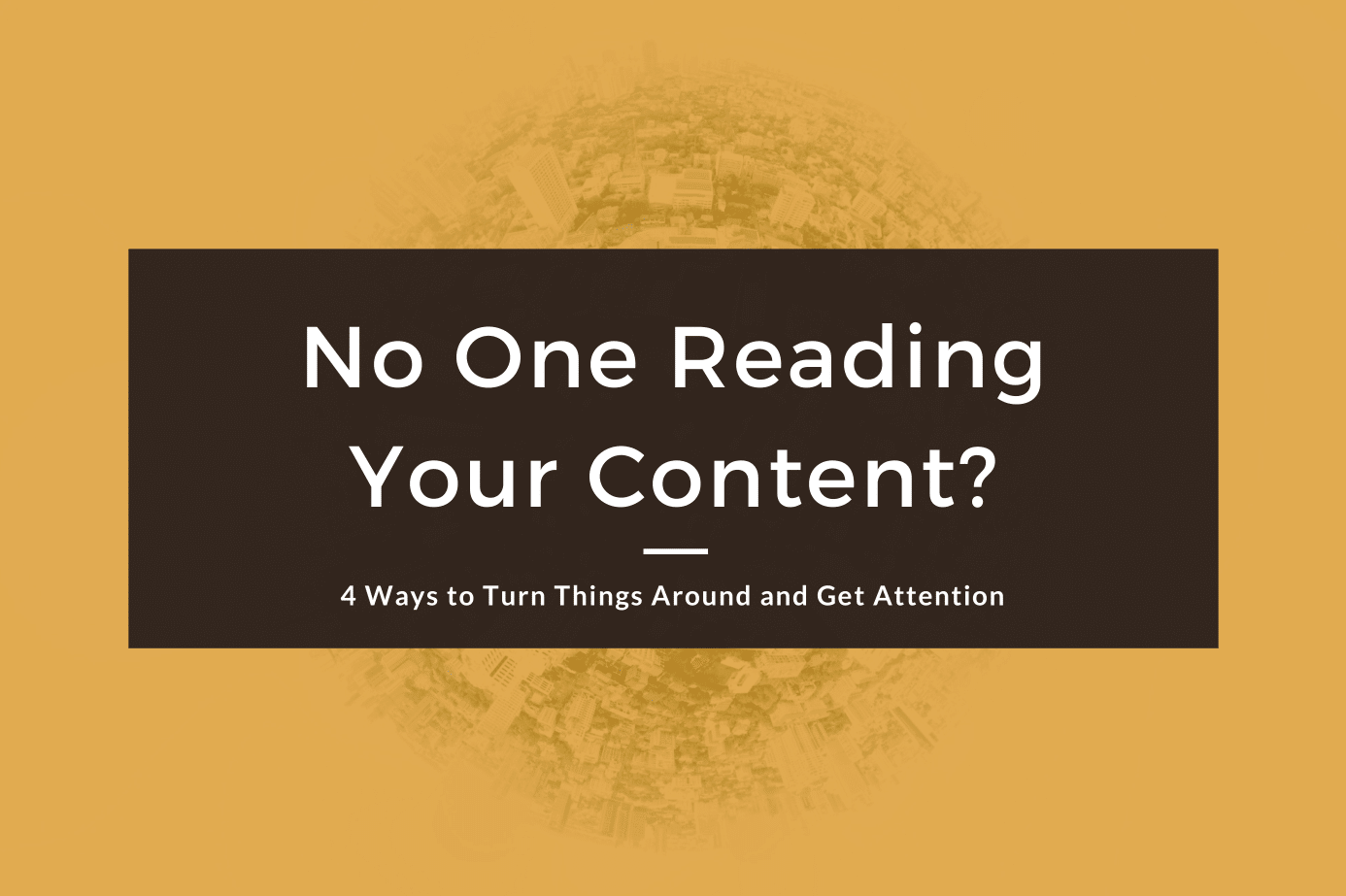Content goals will vary from team to team. But in the end, we’re all playing the same game for attention.
Can you gain it? Can you retain it?
That’s why we spend all this time writing new content, refreshing old content, and building audiences on our most relevant channels.
But you’re often left with one question—why isn’t anyone reading our content?
Let’s diagnose the problem.
The Distribution Dilemma
When page views for new content are low, it’s easy to blame it on distribution.
We tell ourselves that sharing on social media just isn’t what it used to be. The platforms are squeezing organic impressions out.
We say that we just aren’t using the right channels. That it’s time to get better at the new, emerging channels that people seem to love so much.
And you know what? You’re right, in a way.
Marketing teams invest hours and hours creating a piece of content only to blast it out to the audience once and then let it fade away into the depths of their websites.
This is a known issue for all content marketers. So, when no one is reading your work, you look for advice from someone like Ross Simmonds:

That’s it! Problem solved. Just spend way more time on distribution, and you’ll be good to go.
Well, maybe not.
All content marketers have to look in the mirror and face one hard truth—that our work might just not be that good.
No one wants to think that way. We want to believe that all the time and money we invested in content didn’t go to waste. But sometimes, you can do all the right things from a distribution standpoint and still hear crickets.
Let’s not be extreme, though. There are definitely times when simply turning up the dial on distribution will solve your issues. Andy Crestodina recently said it best:

Getting hung up on the last step between good and great is a surefire way to get sucked into analysis paralysis.
But that’s a whole separate issue.
There are plenty of situations where no one reads your work because it doesn’t meet the “good” mark.
That’s when it’s time to take a step back and reevaluate a few things.
4 Things to Do When Your Content Falls Flat
You’ve done all you can with distribution, and content is still falling flat.
Now what?
You might just power through. Consistency is key, right? If you just keep putting out what you feel is good work, things will start to pick up. The organic search rankings will start to kick in and all the effort will pay off.
Instead of maintaining the status quo and hoping for the best, dig into what’s going wrong.
If no one is reading your work even when it’s distributed well, consider these four solutions.
1. Slow Down
Are you clinging to a certain publishing schedule that prioritizes content for content’s sake?
For years, you were told that quantity and consistency were key. Set a schedule for yourself (2, 3, 4, or even 5 posts per week) and stick to it religiously. That’ll get readers to trust you.
And to be sure, there are plenty of brands that make this kind of schedule work.
But what you don’t see is the budget that makes it happen. The number of people, money, and time involved in balancing quality with quantity.
If no one is reading your work, and you know the problem is that it’s just not good enough, slow down.
Ditch the arbitrary publishing cadence and focus on generating top-notch ideas that you can execute well.
Finding a way to maximize both quantity and quality is a worthy (albeit somewhat lofty) goal. You probably won’t be able to do both at the same time, though.
Nail quality first. Then slowly experiment with higher quantities to find the sweet spot. That way, you know you have amazing pieces of content worthy of the time you’ll spend on distribution.
2. Take Your Content Deeper
What’s the perfect length for a blog post?
If your immediate thought was to answer with a number you read in a report recently, hold off for a second.
We’ve come out on the other side of a years-long “snackable content” trend only to find ourselves in the middle of the long-form renaissance.
Are you one of the marketers getting too caught up in the specifics when it comes to content length?
The reality is that both short-form and long-form content can work. You won’t get more attention just because it’s longer.
It only seems that way because long-form content generally allows you to go deeper on a topic. The value is in the usefulness of your content, not the word count.
This is the crux of the 10x content framework. Not to just make your content longer than the competition—but to make it significantly better. Provide more in-depth solutions to your audience’s key pain points.
If you can do that best with short-form content, go for it! It’s a matter of thinking strategically about your content rather than blindly following best practices.
3. Put the Reader First
“Of course, I need to put the reader first. We always do that!”
Focusing on the audience is nothing new in content marketing. That’s why you come up with all kinds of content ideas around your target audience’s pain points rather than your product features.
However, products and services often find a way to sneak into average content. Maybe it’s just a quick mention with a “Contact Us” link in the final paragraph. Or, maybe you devote the whole concluding section to a mini-product pitch.
Your readers probably don’t feel like you’re putting them first when you do things like that.
Most brands don’t have the kind of reputation that makes it okay to constantly talk about products. Ahrefs can turn massive guides into product advertisements because readers know the content provides so much value.
Maybe your brand will reach that same level. But if it hasn’t yet, improve your content by actually putting the reader first at all times.
4. Take Chances With Your Content
Are you playing it safe with your content?
Sure, you have your target audience. But it’s so wide that you’re basically trying to appeal to everyone with each piece of content. You don’t want to take too many strong stances for fear of turning off potential customers.
Instead, you present the facts. Maybe you have an engaging writing voice, but you avoid sharing real opinions across your work.
This is a mistake.
Opinions are what set content apart. They’re what make you seem like an authoritative figure in your industry.
It will feel risky to take a stand when creating a piece of content. Take that chance. You’ll form stronger relationships with the right prospects along the way.
What’s Holding Your Content Back?
It hurts to think that your work might not be very good.
But guess what? No one is going to stop you from publishing. That’s the beauty of the content marketing game.
People aren’t seeing your less-than-stellar content? Great. Move on to the next piece and create something that will wow your audience.
Your prospects and customers won’t remember the work you’re worried about right now—they probably didn’t see it.
What they will remember is that unbelievable article you wrote that solved a real problem for them.
Focus on creating more of those articles, and you’ll start getting the kind of attention you’ve been hoping for.
